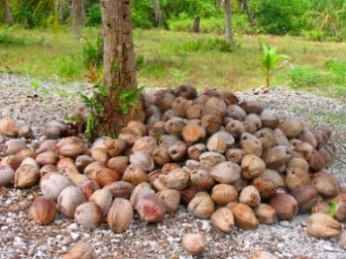-->
-->You've heard it time and again: fad diets don't work for permanent weight loss. But what about those times when you really need to lose some weight fast? It's hard to pass up the promise of crash diets like the Lemonade Diet, Cabbage Soup Diet, or Lose 21 Pounds in 21 Days when your mission is to squeeze into a new outfit in time for a reunion, wedding, or other special event.
The truth is that nothing is wrong with losing weight rapidly -- as long you do it the right way, says Michael Dansinger, MD. He's the medical doctor for NBC's The Biggest Loser show, which spotlights quick and dramatic weight loss.
Dansinger advocates a diet that minimizes starches, (even healthy whole grains should be controlled), added sugars, and animal fat from meat and dairy foods. For rapid weight loss, dieters should eat mainly fruits, veggies, egg whites, soy products, skinless poultry breasts, fish, shellfish, nonfat dairy foods, and 95% lean meat.
He notes that there are other ways to control calories, such as minimizing total fat, but believes that tends to be more challenging than his suggested weight loss plan.
Other experts recommended tactics including drinking lots of water, eating plenty of protein, and keeping a food journal.
"Eat enough protein and distribute it evenly through your meals to minimize muscle loss and maximize fat loss," says Tallmadge, author of Diet Simple, who also advises clients to swap out carbs in favor of veggies.
American Dietetic Association spokesperson Dawn Jackson Blatner, RD, recommends:
- Eat plenty of low-calorie vegetables to help you feel full.
- Drink plenty of water so you don't confuse hunger with thirst.
- Clear the house of tempting foods.
- Stay busy to prevent eating out of boredom.
- Eat only from a plate, while seated at a table.
- Always eat three meals and one snack daily -- no skipping meals.
"Even if you write it down on a napkin and end up throwing it away, the act of writing it down is about being accountable to yourself and is a very effective tool for weight loss," says Bonnie Taub Dix, MA, RD, a food and nutrition blogger for USA Today.
Although it won't actually help you lose weight, Blatner, author of The Flexitarian Diet, says that eating fennel seeds, ginger, parsley, peppermint, pineapple, and yogurt with honey one to three days before the big event can help you de-bloat and keep your tummy feeling flatter.
Exercising for Fast Weight Loss
Even if you are currently exercising, you'll need to kick it up a notch if your goal is rapid weight loss, says Gidus. A study published in the Archives of Internal Medicine indicated that losing weight requires close to an hour a day of moderate exercise.
That fits in with Dansinger's recommendation of seven hours per week of cardio exercise leading up to your special event.
"Cardio burns the most calories, so it is ideal for fast weight loss, but afterwards you need to include a few hours a week of strength training," he says. To burn the most fat, try to break a sweat after your warm-up and keep sweating for the entire hour, says Dansinger.
Most everyone can do an hour a day, but the intensity of your workout will depend on your current state of fitness. Experts recommend gradually increasing exercise intensity to avoid injury.
When you can't do cardio, Tallmadge recommends doing strength training at least twice weekly, working all your major muscle groups, and fitting in at least 15,000 steps a day (get a pedometer to keep count).
Gidus suggests doubling up on your exercise routine: "Do a morning and evening workout, and if you don't have time to do two a day, expend more calories in the workouts you are currently doing."
Another option is to incorporate interval training. The new South Beach Supercharged plan by Arthur Agatson, MD, promotes adding high-intensity intervals to workouts to burn more calories in less time.
"Interval training allows people to work harder without having to spend the entire time at the higher level, and over time, the more you do it, the easier it becomes to burn more calories," says Blatner.
Source: http://www.webmd.com/diet/guide/lose-weight-fast-how-to-do-it-safely
 Weight loss is difficult. Not in theory – eat less and move more – but in implementation. One of the major obstacles for most people is the lack of knowledge and/or confusion surrounding caloric intake and expenditure. Most people consume more calories than they realize and burn far less calories than they expect. Knowing what (# of calories) is actually in the foods they consume is one problem and knowing how calories are referenced is another. A breakfast muffin for instance may have 400-600 kcal. While the label says 200 kcals/serving, some overlook that the label also states there are two servings per muffin. At quick glance the calories and fat presented are only half of the actual value. A similar problem occurs in the gym. The Stairclimber shows 300 kcal after a 30 minute workout. In reality, the value is only correct if the individual maintained an upright posture, did not lean on the machine, and maintained proper pace and range on the pedals; or more importantly sustained heart rates. Just like the serving and portion sizes matter in food, heart rate matters when performing continuous exercise aimed at achieving weight loss.
Weight loss is difficult. Not in theory – eat less and move more – but in implementation. One of the major obstacles for most people is the lack of knowledge and/or confusion surrounding caloric intake and expenditure. Most people consume more calories than they realize and burn far less calories than they expect. Knowing what (# of calories) is actually in the foods they consume is one problem and knowing how calories are referenced is another. A breakfast muffin for instance may have 400-600 kcal. While the label says 200 kcals/serving, some overlook that the label also states there are two servings per muffin. At quick glance the calories and fat presented are only half of the actual value. A similar problem occurs in the gym. The Stairclimber shows 300 kcal after a 30 minute workout. In reality, the value is only correct if the individual maintained an upright posture, did not lean on the machine, and maintained proper pace and range on the pedals; or more importantly sustained heart rates. Just like the serving and portion sizes matter in food, heart rate matters when performing continuous exercise aimed at achieving weight loss.







